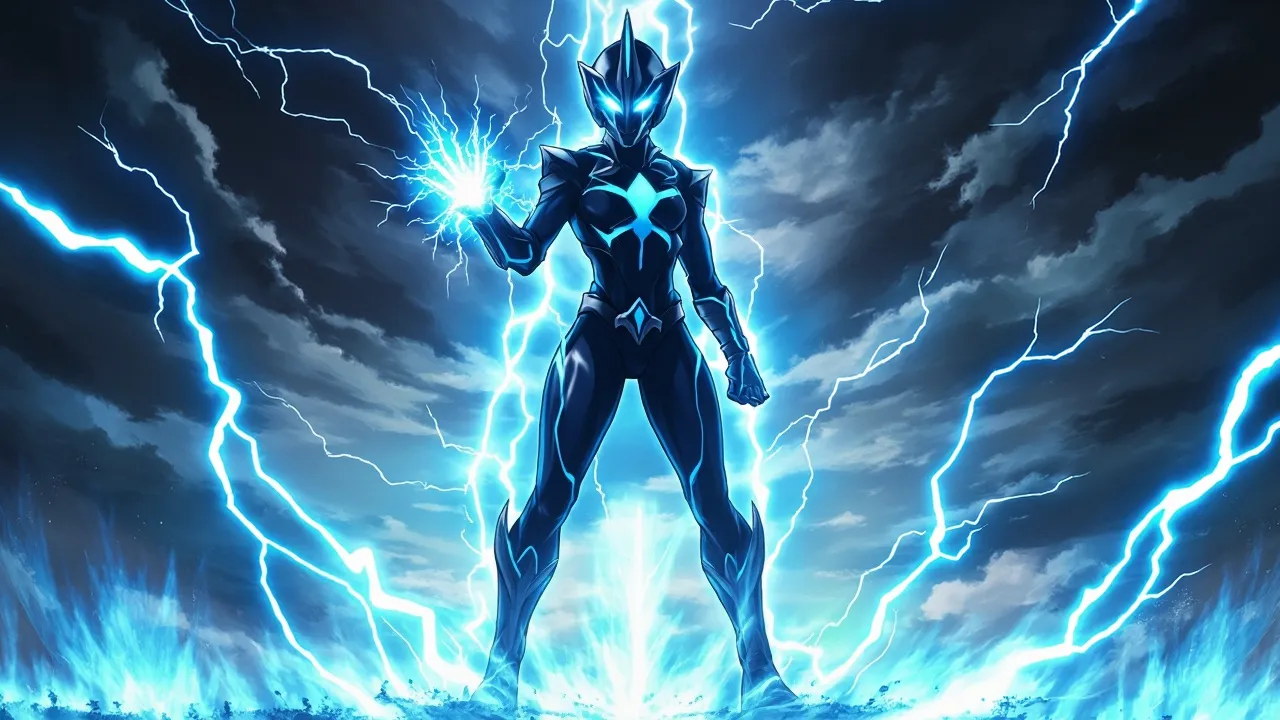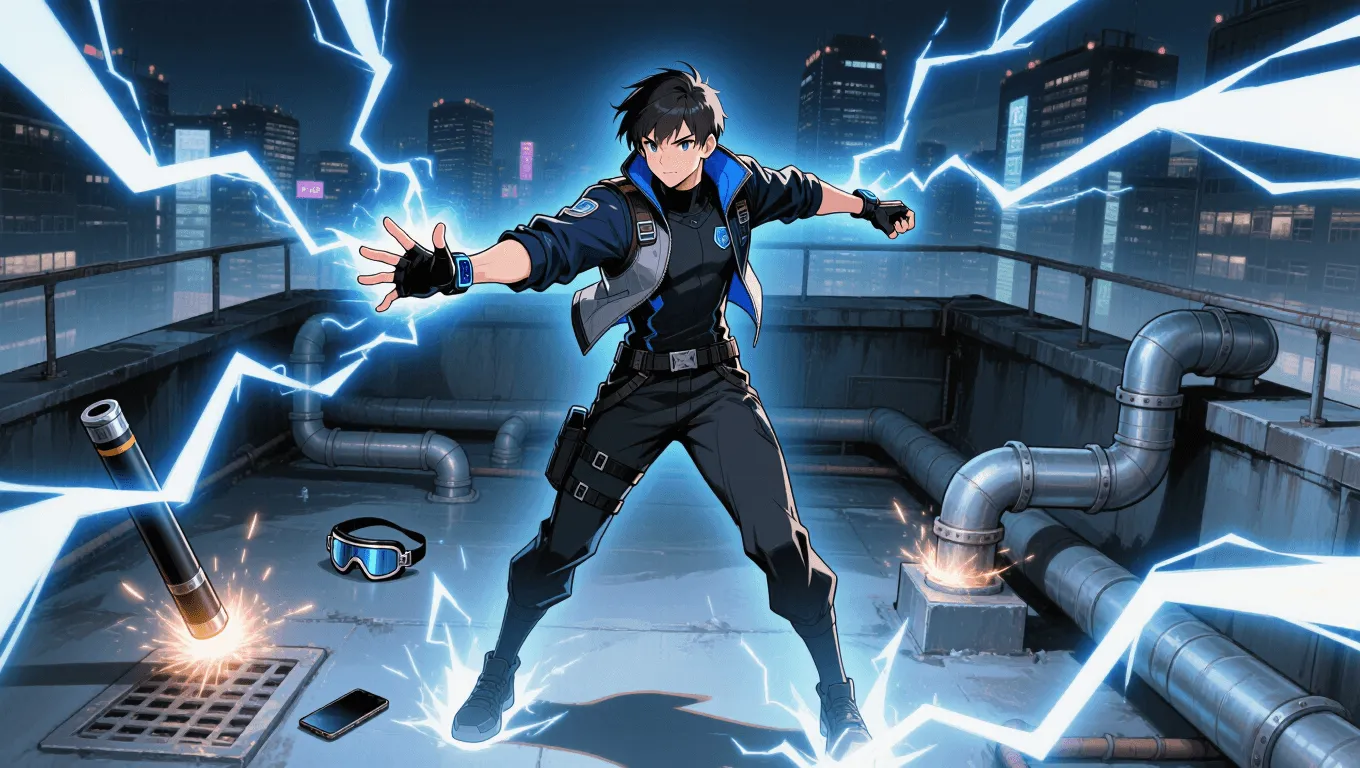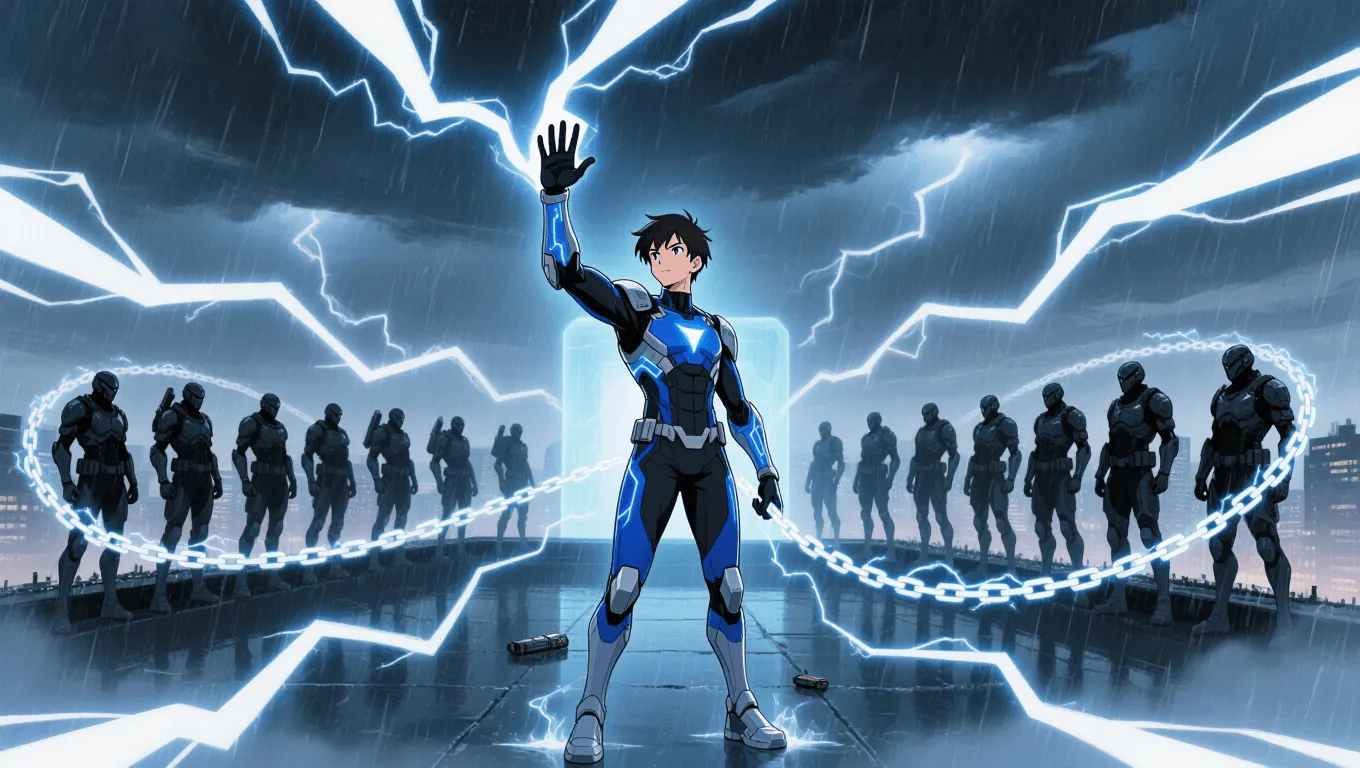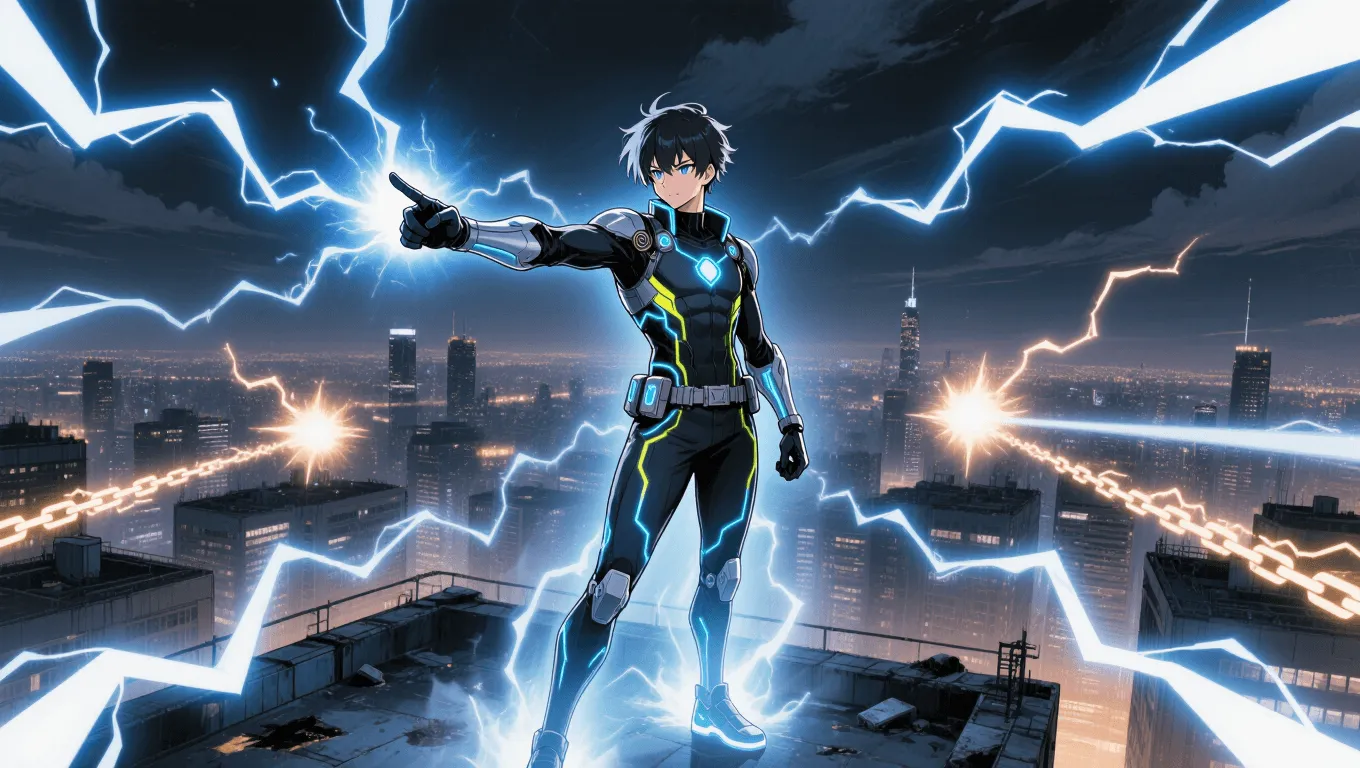Lightning Rod

Lightning Rod Video Demo 🎬
Table of Contents
Lightning Rod is a specialized electricity-based superpower that allows a character to attract, ground, store, and precisely redirect high-voltage charges—especially natural lightning and artificial electrical discharges. As the name suggests, a user becomes a living conductor, turning dangerous currents into tactical energy. In many power systems, Lightning Rod overlaps with electrokinetic control, surge absorption, arc channeling, and EMP mitigation, making it a favorite in storm-heavy settings and high-tech battlegrounds. For more powers like this, explore the complete list of superpowers or try the random superpower generator for fresh inspiration.
What Is Lightning Rod
Lightning Rod is the ability to serve as an active conduit for electrical energy. Unlike general electrokinesis, which manipulates electricity at will, Lightning Rod emphasizes attraction and redirection: drawing bolts into a safe path, grounding them harmlessly, and then releasing the captured charge with controlled timing and trajectory. Advanced users can shape ionized pathways in the air, create a conductive aura, and modulate voltage, current, and amperage to fit the situation. It is equal parts physics and finesse—part Faraday cage, part capacitor, part human lightning attractor.
Core abilities of Lightning Rod
Electrostatic Attraction
The user subtly shifts electric potential to entice incoming discharges—natural lightning, tasers, railgun arcs, or overcharged machinery—so the bolt prefers the user’s path over nearby targets. This “bolt magnetism” can be directional, allowing selective protection of allies or equipment.
Bolt Redirection
Once a strike is captured, the user bends its path along ionized channels, metal structures, or ground lines. Redirection can be instantaneous or delayed by a fraction of a second to reposition an attack, turning enemy fire back on its source.
Energy Absorption and Storage
The body acts like a biological supercapacitor. Excess charge is buffered in specialized tissues or a bioelectric field, allowing temporary energy hoarding for later discharge. Skilled users manage charge with micro-dumps into the ground to prevent overpressure, burns, or cardiac risk.
Adaptive Conductivity
Tissue conductivity dynamically increases during capture and decreases during rest. This limits internal damage, prevents nerve overload, and protects organs. Advanced forms let the user make specific body parts more or less conductive on command.
Grounding Aura
A localized field shunts stray currents away from fragile electronics and teammates, creating a safety bubble. In tight corridors or server rooms, this reduces collateral surges and prevents cascade failures.
Arc Channeling
The user shapes plasma arcs—converting raw lightning into tight, whip-like streams or broad, fan-shaped bursts. Arc geometry determines range, penetration, and spread, useful for clearing drones, disabling vehicles, or sweeping infantry formations.
Ionization Pathways
By pre-ionizing air columns, the user “draws lines” in the sky, guiding where lightning will travel. This makes impromptu powerlines, precision strikes, or high-altitude handoffs to storm cells for long-distance attacks.
EMP Buffer and Surge Protection
Lightning Rod naturally damps electromagnetic pulse effects around the user. Portable devices, HUDs, and cybernetics survive better inside this buffer, allowing electronics to function through storms and battlefield overcharges.
Precision Discharge
Stored energy can be metered in millisecond pulses, continuous beams, or strobing packets. The user tunes voltage and current to stun, weld, cauterize, or cut—versatile for both rescue operations and surgical strikes.
Storm Magnetism
During thunderstorms, the user’s presence increases local strike frequency. With weather partners, this scales into sustained bombardment, battlefield illumination, or area denial through repeated ground strikes.
Application / Tactical Advantages in Combat
Offensive Control
-
Turn enemy energy weapons into liabilities by drawing their arcs and reflecting them.
-
Punch through armor by focusing current at contact points—hinges, seams, electronics bays.
-
Use strobing discharges to blind optics and scramble sensors without lethal overkill.
Defensive Safeguards
-
Intercept lightning or electrical attacks aimed at allies and infrastructure.
-
Create a mobile Faraday corridor so squads can move under storm or EMP pressure.
-
Bleed off dangerous surges from malfunctioning reactors, mechs, or shield generators.
Mobility and Terrain Shaping
-
Use arc leaping: micro-discharges to conductive anchors (rebar, railings) for rapid traversal.
-
Melt and reshape metal doors or weld barricades in seconds.
-
Ionize air to cut fog banks, ignite flares, or signal allies across long distances.
Anti-Tech and Area Denial
-
Drain batteries, overload capacitors, and soft-kill drones with controlled spikes.
-
Seed conductive filaments (wires, chains) to create lightning lanes enemies must avoid.
-
Establish “no-fly” bubbles by threatening avionics with proximity arcs.
Rescue and Utility
-
Cauterize wounds in emergencies (with risk), power field equipment, or jump-start vehicles.
-
Disperse or detonate unexploded ordnance by remote discharge.
-
Stabilize infrastructure during blackouts by routing power safely to critical systems.
Level: Level 1 🏙️, Level 2 🌇, Level 3 🌃
Level 1 — Conduit Initiate

-
Can attract small discharges (stun batons, static blasts) and harmlessly ground them.
-
Limited storage; must discharge quickly to avoid muscle cramps or burns.
-
Short-range redirection (a few meters) using existing metal paths; accuracy is coarse.
-
Basic device protection within arm’s reach; phones and goggles survive minor surges.
Level 2 — Storm Handler

-
Confidently attracts and redirects natural lightning during storms.
-
Medium energy storage with controlled pulse output—stun to nonlethal takedown settings.
-
Creates ionization rails for 20–50 m precision strikes and arc whips for crowd control.
-
Maintains a reliable EMP buffer for squad electronics in close formation.
Level 3 — Living Capacitor

-
Selective attraction of multiple simultaneous bolts with split-second routing.
-
High-density storage with multi-mode discharge: beam, burst, chain, or diffuse sheet.
-
City-block scale ionization paths to paint targets from rooftop to horizon.
-
Fine-tunes conductivity per limb; can insulate self while electrifying external gear.
-
Sustains operations without storm cover by pulling from grids, generators, or ambient fields.
Limitations of using the Lightning Rod
-
Environmental Dependency: Peak performance thrives in stormy or high-voltage environments. Clear skies require external sources (power lines, coils, batteries) or pre-charged reserves.
-
Overcharge Risk: Holding too much energy stresses nerves, muscles, and the heart. Mismanaged storage can cause internal burns or syncope; safe venting is mandatory.
-
Collateral Damage: Electricity seeks multiple paths. Wet ground, metal debris, or crowded spaces can spread arcs unpredictably, endangering allies and civilians.
-
Insulation Barriers: Thick rubber, ceramics, dry wood, glass, or vacuum gaps break circuits, limiting reach and reducing damage.
-
Faraday Enclosures: Proper cages and grounded shielding dissipate incoming currents, neutralizing offensive arcs.
-
Electronics Dependency: While the user shields friendly gear, prolonged exposure still shortens device lifespan; delicate instruments may require extra hardening.
-
Magnetic Side Effects: Intense current pulses create magnetic fields that can disrupt compasses, tapes, or unshielded implants.
-
Line-of-Sight Guidance: Without conductive routes or ionized channels, precision falls off at extreme range.
Weakness against what other superpowers
-
Energy Nullification: Cancels electrical phenomena outright, leaving the user with limited options beyond physical confrontation.
-
Insulation Generation: Creation of rubber-like barriers, ceramic plates, glass walls, or foam that breaks circuit continuity.
-
Vacuum Manipulation: Removes the medium needed for corona and arc propagation, stopping long-range discharges.
-
Earth/Stone Armor: Dense mineral layers provide high resistance, reducing penetration and spreading current harmlessly.
-
Hydrokinesis (Directed): While water is conductive, a hydrokinetic can redirect or diffuse the user’s arcs into broad, nonlethal spreads, blunting offensive focus.
-
Electromagnetic Shielding: Active EM fields that deflect or phase-shift charges, similar to a mobile Faraday dome.
-
Light/Photonic Powers: Non-conductive energy attacks (hard light constructs, lasers) bypass electrical defenses.
Synergistic Power Combos
-
Weather Control / Thunderstorm Summoning: Partners seed clouds and drive charge separation; the Lightning Rod user paints targets with ionization rails for lightning-on-demand artillery.
-
Metal Manipulation (Ferrokinesis): Shapes live conductive rails, cages, and spears, turning city scaffolding into a guided grid of arcs.
-
Flight / Aerial Mastery: Offers superior vantage and safer grounding options; dive-and-strike patterns improve accuracy and reduce collateral.
-
Hydromist Sculpting: Fine water vapor lines act as temporary conductors for elegant, low-visibility guidance of bolts.
-
Technopathy / Engineering Savant: Integrates surge-resistant gear, charge meters, and smart capacitors for safer storage and smarter discharges.
-
Telekinesis: Holds conductive projectiles midair as lightning lures, creating moving targets and decoys.
-
Kinetic Dampening: Protects teammates from concussive aftereffects of large discharges while they operate in the user’s storm bubble.
Known Users
-
Thor (Marvel) — iconic storm caller who frequently channels and redirects massive electrical forces via Mjolnir.
-
Black Lightning (DC) — master of electrical absorption and precision discharge in urban environments.
-
Storm (X-Men) — weather dominator capable of calling and shaping lightning with fine control.
-
Static (Virgil Hawkins) — electromagnetic savant adept at arc riding, device-safe buffers, and nonlethal takedowns.
-
Raiden (Mortal Kombat) — thunder god who embodies the living conduit archetype.
-
Cole MacGrath (inFAMOUS) — urban-scale lightning channeling, storage, and directed EMP effects.
Looking for more abilities to pair with this? Browse the master list of superpowers or roll the dice with the random superpower generator to discover unexpected combos.
